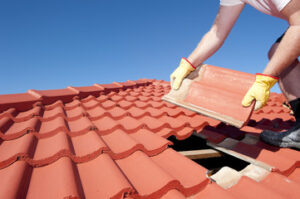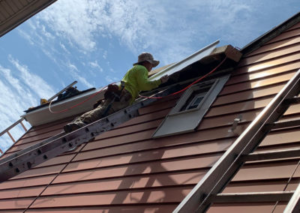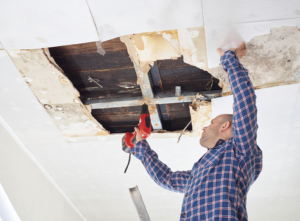Attorneys provide a range of legal services, including giving professional advice, preparing paperwork and appearing in court. They also strive to use their legal expertise to advocate for change and promote justice.
The responsibilities of attorneys are largely the same worldwide, although some variations exist. For instance, the title attorney is sometimes referred to as an esquire or solicitor in some countries. Click the Website to know more.

Attorneys represent clients in court and other legal proceedings. They also serve as advisors for businesses and individuals on a variety of legal issues. Whether you need an attorney for a business dispute or criminal charge, it is important to find one with the right license and experience to handle your case. A licensed attorney is required to maintain strict ethical standards, including protecting client confidentiality and keeping up with changing legal rules.
Licensing and experience are particularly important when it comes to criminal cases. Criminal defendants are often questioned by prosecutors in court, and it is important that the lawyer you hire is familiar with state criminal laws. In addition, an experienced attorney will be familiar with the tactics that prosecutors use to question witnesses and present evidence in court.
Conflicts of interest may arise when a lawyer’s personal or business interests conflict with her duties to a client. This type of conflict can affect a lawyer’s duty to loyalty, her obligation to keep confidences and secrets private and her responsibility to exercise independent professional judgment.
Representation of multiple parties with potentially adverse interests is generally nonconsentable, but it may be permissible in a limited number of circumstances. For example, it is not prohibited to represent clients aligned directly against each other in a litigation or other proceeding before a tribunal unless such representation would render the lawyers unable to competently and diligently develop each client’s position.
In addition, a lawyer may communicate with a person who is represented by counsel concerning a matter in which the lawyer is not representing that person if the lawyer has independent justification or legal authorization for communicating with the person. For example, a lawyer who is representing an individual in a criminal investigation may communicate with that individual’s family members about the case.
Researching and Analyzing Legal Issues
Creating an effective legal research plan is an important step in conducting thorough legal research. The practice of law often involves an immense amount of case and statutory material, and it is essential to be efficient by following a well-defined research process that can be applied to any research project. Attorneys must also be able to analyze and synthesize these resources to create a coherent legal argument that can be used in court.
When beginning a legal research project, attorneys must first identify the key facts of the case and the relevant legal principles at stake. This requires some background reading in primary and secondary sources, such as treatises, legal encyclopedias and practice series. Having this foundation will help the researcher save time by avoiding the need to review irrelevant or out-of-date materials, and it will provide a framework for developing a legal argument.
Once the key facts are identified, the researcher can then begin to search for primary sources. The use of a citator is an essential tool at this stage of the process, as it will show the researcher which cases have discussed the same legal issues and which opinions were on point in those decisions. It is also critical to remember that legal analysis is a fluid process, and the lawyer should be prepared to update his research as new cases and statutes are issued.
During this stage of the research, it is also helpful to keep track of all materials reviewed. This can be done using paper logs, folders on Westlaw and Lexis or an online citation management platform. Keeping a research log will help the researcher avoid missing sources, and it will make it easier to explain his strategy to co-workers or clients.
Negotiating and Mediation
As part of a litigation strategy, an attorney will negotiate on behalf of clients to settle legal disputes out of court. This may involve a variety of discussions including with opposing counsel, insurance adjusters and other parties involved in the case. A successful resolution to a dispute through mediation often preserves working relationships and avoids the expense of a trial, as well as the time, disruption, stress and emotional strain of a litigated matter.
When preparing for mediation, an attorney will work with the client to identify their basic needs, interests and priorities. This will help them develop realistic settlement proposals and make informed decision on whether to compromise their position. A skilled mediator can facilitate this process, using their experience and knowledge of negotiation techniques to enable participants to communicate more effectively, frame and reframe issues for easier decision making and identify creative solutions.
A lawyer will often encourage their clients to come to mediation with a flexible mindset, prepared to modify positions as appropriate. It is difficult to profit from mediation if the client has an absolute “bottom line” that they refuse to cross. At the same time, the client should remain confident that a compromise will be in their best interest and that they can justify any reductions to their demands or increases to their offers.
In a typical mediation proceeding, attorneys and their clients will meet with the mediator at separate sessions. These conversations are confidential and not admissible in any other legal proceedings. The mediator will often summarize and reframing the issues, helping participants prioritize their positions and decide where to focus their energy. This may include identifying the underlying needs and priorities of other parties, such as financial gains or preservation of the family heritage.
Critical Thinking
Critical thinking is the intellectually disciplined process of actively and skillfully conceptualizing, applying, analyzing, synthesizing and/or evaluating information gathered from, or generated by observation, experience, reflection, reasoning, communication and/or examination as a guide to belief and action. It encompasses the application of universal intellectual values that transcend subject matter divisions, such as clarity, accuracy, precision, consistency, relevance and sound evidence and good reasons.
This type of thinking requires open-mindedness and an inquisitive mind. You must be willing to question assumptions and biases, as well as those of others, so that you can form accurate, comprehensive, impartial understandings of complex legal issues. This is important because it allows you to identify the most effective solutions that have the business’ best interests at heart.
You should be capable of gathering and assessing information from various sources, including interviews with witnesses, clients and other relevant parties. Critical thinkers are able to see connections between seemingly unrelated pieces of information and make sound predictions from their analysis. They are also skilled at identifying and eliminating flawed reasoning in their assessments of a situation.
In addition to being able to critically assess a situation, you must be able to communicate your findings effectively. This is especially important if you are representing clients in court, because it helps you articulate your arguments and explain them to the judges and other party members. If you are unable to clearly explain your rationale, it could impact the final decision made by the court. This is why it’s important to practice your communication skills and seek feedback from others on how you can improve. Taking on board constructive criticism and reflecting on it can help you develop as a more critical thinker.
Strong Character
When it comes to attorney work, strong character is important. As such, attorneys need to have good morals and be able to work with clients in sensitive situations. Strong character can help an attorney be more successful in their career, and it is something that the California Bar Association considers when granting attorneys a license to practice law.
Good morals is important for attorneys because they can ensure that their clients are treated with respect and that the attorney will do what is right in the case. In addition, having good morals can help an attorney build trust with their clients and make them feel that they can confide in them and work together with them.
Having good morals is also important for attorneys because it can show that they are honest and have integrity, two qualities that are essential for the job. In addition, having good morals can also allow an attorney to be more effective in their work because they will be able to solve problems and find solutions that are fair for everyone involved.
CharacterStrong is a program that was designed to teach students about different character traits and how they relate to the people around them. Teachers use the lessons to help children learn how to treat others with respect, be responsible and work well with their peers. Teachers can incorporate these lessons into their classrooms and they can also teach them to parents and caregivers so that the entire family can benefit from the lessons. They can also use the lessons to help children develop good study habits and how to make smart choices.



